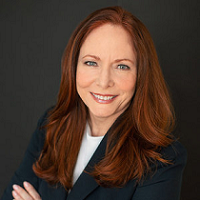 By Pamela J. Gallagher, Founder/CEO, Gallaghers Resulting, LLC
By Pamela J. Gallagher, Founder/CEO, Gallaghers Resulting, LLC
Twitter: @GResulting
Hospitals and health systems have spent the past decade responding to patient and government demands for increased price transparency, and the demand only continues. While the healthcare industry has made strides in ensuring patients know the cost of their care up-front, consumer expectations are growing to include that hospitals should be able to explain how their costs are determined.
The bottom line is that we cannot accurately tell patients—our customers—how much they are going to pay for a service at our hospital if we do not know the exact cost of that service. We cannot help patients make wise decisions for their care and the costs associated if we cannot break down the price of their physician, the cost associated with the difference in the quality of materials used for a procedure, or the financial considerations of the various types of anesthesia available to them for surgery, to name just a few examples.
Part of the business of healthcare is knowing what your costs are. From my perspective, too many hospitals do “quasi-cost accounting.” We need to do better than offer our best guess and hope we can negotiate a higher reimbursement from insurance companies that will cover the costs of services provided.
Hospitals benefit from accurate costing.
Patients aren’t the only ones who benefit when hospitals have a clear understanding of the cost of a service; hospitals benefit as well. As we seek to respond to customers’ demands for quality care at a lower cost, we must understand our services’ actual cost to find sustainable ways to lower the cost of providing care.
In the U.S., over $700 billion of healthcare spending is considered waste, according to Health Catalyst. Hospitals’ lack of understanding about how much it costs to provide patient care, and “a lack of knowledge about how those costs compare with the outcomes achieved,” leads to increased cost to hospitals.
To increase revenue, some hospitals will just give a price increase for a service without knowing if it is sufficient to cover actual costs or first considering ways they could reduce costs without increasing the price that patients must pay for the service. More sophisticated cost accounting helps hospitals understand how many times that service must be performed at a certain price to break even, or whether that service should even be offered in the first place. You cannot (and should not) do it all.
Healthcare’s “hope for the best” approach to cost accounting will not help hospitals reach their financial goals or respond to requests for better care at lower costs. Investing in determining the accurate cost of the services your hospital offers is crucial for your organization’s future.
Cost accounting efforts aren’t free.
Costing can be quite an expensive undertaking for complex organizations like hospitals and healthcare systems. However, I believe too many hospitals use this as an excuse and end up costing themselves and their patients more in the long-term. As an article in Healthcare Financial Management explains, the reason for the limited benefit that some hospitals report after undergoing cost accounting transformations relates to hospitals’ “perceived inability to influence their prices. Many hospitals feel that their ability to improve payment rates is limited, even if they develop sophisticated cost accounting systems.”
I have written several times about how hospital executives’ perceptions about our own industry keep us from looking at healthcare through a business lens and adopting innovative improvements to meet customers’ needs and demands. The costs associated with major changes to cost accounting are often steep, but always necessary in today’s climate.
Costing solutions are not one-size-fits-all.
The process of determining the actual cost of a hospital service is daunting because there are so many factors to consider. Some physicians are more experienced or are recognized experts in their field. Should their services cost more than other physicians in the same hospital, and if so, how much more? And what about the equipment or supplies used for surgery? If a patient desires the highest-quality, longest-lasting materials to be used for a knee replacement, for example, it is a challenge to represent the difference in cost to the hospital when communicating the price of the service to the patient.
For this reason, I believe that a blend of methodologies is often best when making changes to cost accounting processes. However, this is a complicated undertaking, and I recommend that hospitals seek expertise in costing to ensure they are creating a sustainable and flexible model that will produce the most accurate pricing.
This article was originally published on Gallaghers Resulting blog and is republished here with permission.
